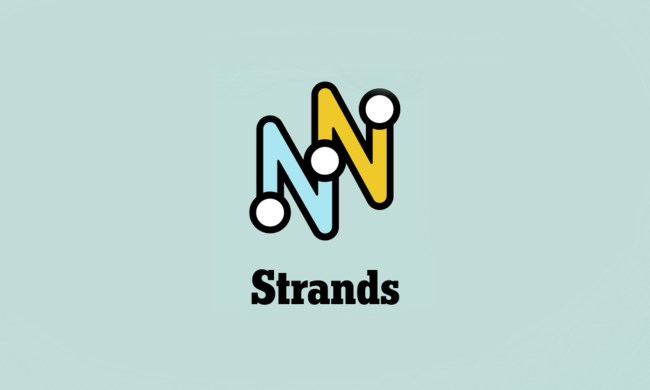Killzone: Shadow Fall was a fine PlayStation 4 launch title, with a mix of single-player campaign and competitive multiplayer action bolstered by superior graphics. Guerilla Games had big ideas for its debut effort on Sony’s new hardware, but some of those had to be sidelined due to the realities of having to hit a console launch deadline.
That’s where Killzone: Shadow Fall Intercept was born. A standalone expansion of the core game, Intercept introduces a co-op mode in which four players take on different roles as they attempt to repel Helghast incursions on three different control points. Sony isn’t ready to discuss pricing yet, but it’s confirmed that the add-on — releasing in summer 2014 — will be a free download for those that have a Shadow Fall Season Pass.
We spent s good chunk of time playing Intercept at a recent Sony event, and the overall impression is positive.
Story/Concept

Another side of the war. Story serves primarily as a framing device for Intercept, which finds its closest comparison with the sort of wave-based survival modes that pop up in modern shooters. The premise sees four players taking control of the same Vektan Security Agency (VSA) squad encountered in the main game. The intel troops are operating behind enemy lines on a mission to steal vital information from the Helghast and then transmit it back using a series of hacked comm beacons.
In functional terms, each match amounts to a mission, with the player-controlled VSA squaddies working together to maintain control of three beacons — labeled A, B, and C — as Helghast forces, managed by an AI “Commander” (not unlike Left 4 Dead‘s Director) pour in from all sides. Victory is a matter of reaching a host-determined point total, through both combat and keeping a hold on beacons.
Gameplay

Keep it together. There are four soldier classes to field in each Intercept match: Assault, Marksman, Medic, and Tactician. Only one player can fill a class role in a given match, and AI-controlled squaddies take over when the player count is less than four. Each soldier class performs vital functions that interconnect with one another, resulting in an asymmetrical balance that necessitates communication and cooperation.
In the demo we played, Assault’s assault rifle/automatic shotgun (equipped with incendiary rounds) combo brought a lot of medium-to-short-range firepower to bear, but the Medic and Marksman were needed for healing and ammo re-ups. The Tactician carried only a single auto-pistol into battle, but he provided important point defense support with three deployable turrets and a deployable shield. Intercept features a progression system built around completing challenges (earn X number of points, score 10 head shots with a certain weapon, stuff like that), but we only saw a single loadout for each class during our demo.
Fighting for an edge. In addition to the gear your four soldiers carry into battle, Intercept offers opportunities for mid-match game-changers in the form of Capacitors. These pickups appear near the team’s home base, one for every 250 points earned toward the match total. Whoever grabs a Capacitor and plugs it into a machine near the base gets to choose from a set of team-wide bonuses, including everything from jetpacks or miniguns for everyone to double damage for two minutes, a mortar strike, or base camp turrets (turrets pop up around the map to automatically defend each beacon location).
These are powerful boosts that give teams a way to fight back when the AI Commander ratchets up the flow of enemy forces for a more intense challenge. The string-pulling Commander is unpredictable, so smart teams will treat their earned Capacitors as flexible “Panic buttons” that can be tailored to a variety of situations.
Gambling on a win. The simple act of holding beacons keeps a steady flow of points pushing teams toward victory, but each player also earns points for kills, assists, and other battlefield actions. These individually earned points don’t go directly into the master pool; they’ve got to be “banked” first. The team’s Bank is always a central location on the match map, and depositing earned points is as simple as stepping into a highlighted circle and standing there for a few seconds.
There’s a catch though: the more individual, unbanked points you run around with, the higher your score modifier. Will you take advantage of a lull in combat to bank what you’ve earned, or will you let it ride and go for a bigger score, knowing that you’ll lose all those points for your team if you go down?
Presentation

Killing zones. The overall presentation in Intercept is on par with what we saw in Killzone: Shadow Fall. We saw two maps during the demo, and both drew inspiration from locations visited in the main game’s campaign. Each layout is designed specifically for Intercept, however, so there’s always a central base area where the squad’s bank and Capacitor machine are found, and it’s always surrounded by A, B, and C beacons. The maps are on the small side, with the base and each of the beacon locations in easy sprinting distance from one another.
Guerilla will have four maps ready to go for Intercept at launch, with another six to follow after release. While it will be available as both a standalone download and an in-game add-on for Shadow Fall owners, there’s no differentiation on the matchmaking side as far as playing together goes.
Takeaway

Killzone: Shadow Fall Intercept tries doing something a little different. Sony’s never shied away from trying out different ideas with downloadable content (see also: Infamous 2 expandalone Festival of Blood), and Guerilla’s taking a neat approach here to giving newcomers and early adopters a low-cost route to trying out a different flavor of Killzone’s action. There’s a lot more depth in Intercept than “four-player co-op survival mode” really advertises; keep a close eye out for more specific release plans as June’s E3 trade show draws nearer.


